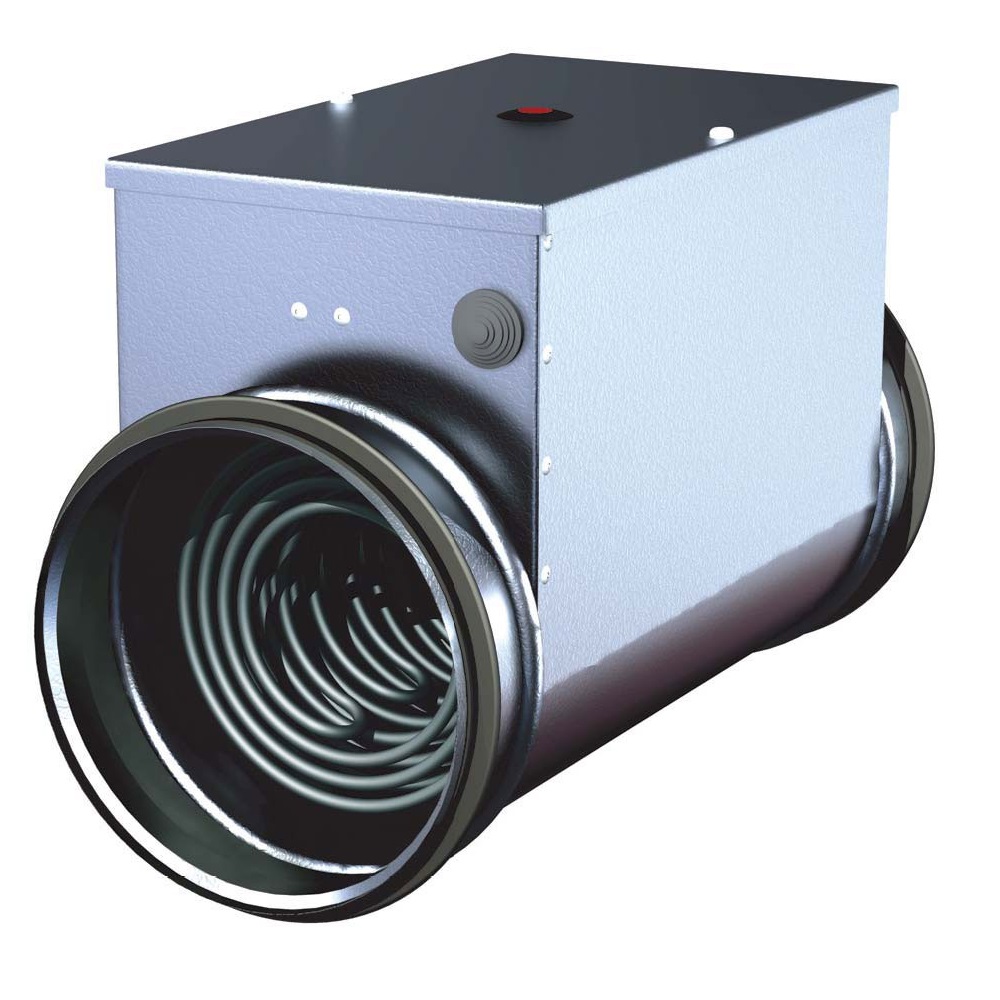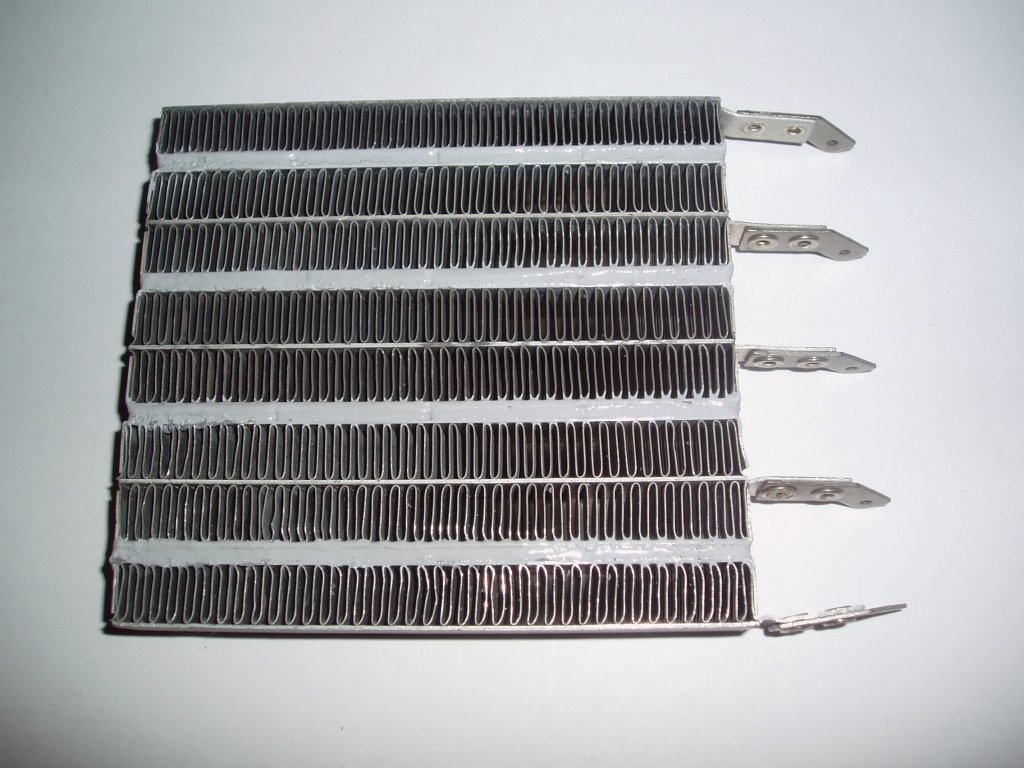In June 2016, I published an article
"The climate system in the apartment with my own hands," which caused a positive reaction from the community. Then I just assembled the climate system, did not have time to test it, and in general was a little euphoric about my victory over equipment and materials.
Now, two years later, I decided to write about the experience of using the system. In short, everything works, but it took some tweaking, namely:
Heating
Even in the discussion of the previous article, smart people explained to me that the recuperator alone would not be enough to provide me with warm air in winter. Indeed, the very first winter showed that the recuperator is able to raise the air temperature by 10–20 ° C, and when the ambient temperature drops below zero, the intake air turned into a frankly cold draft. If I also turned on the humidifier, then it became very cold in the room. In general, it became clear: you need a heater.
In serious ventilation systems, ready-made duct heaters are usually used, such as these:

But they are, firstly, large, and secondly, too powerful. So I bought a fan heater on Avito, broke a ceramic heating element out of it, something like this:

I broke the element in half so that its power dropped to 300/800 W (depending on the wiring diagram), and stuck it deep into the iron pipe entering through the window. In an amicable way, it was necessary to add a capillary thermostat to the system, but I managed with the existing temperature sensors. And so that the relay does not click too often, he bought several meters of thin-walled iron pipes, sawed them into pieces of 15 centimeters and shoved them into the duct after the heater, but in front of the thermal sensor - we got the simplest heat accumulator that smoothes temperature fluctuations.
In this form, the heater has successfully worked for two winters. Experience shows that even in extreme cold the “300 W” mode of operation is sufficient, and most of the time the heater is idle.
Humidifier
Let me remind you that initially I assembled a humidifier from a pair of ultrasonic humidifying elements connected to the intake duct. Perhaps it was the most unfortunate decision of all that I took when designing the system:
- First, this humidifier took energy to evaporate water from the supply air. Thereby cooling it, somewhere at 10-15 ° C. Everything would be fine, but, as I wrote above, in winter (and the humidifier is needed in winter) the intake air is too cold, it has to be heated with electricity. Not only does electricity cost money, which is a pity, so also in winter there is a terrible heat from the batteries working at full capacity, and it would be nice if the humidifier cooled the apartment overheated by the batteries and did not require additional heating.
- Secondly, the ultrasonic humidifier generates mist, part of which does not evaporate and accumulates on the inner walls of the pipes. And this condensate then flows down through all the gaps. Of course, some of the cracks can be sealed, and for leaks through the rest I had an emergency drain system - but an emergency one! This is not good when the emergency drain system starts to work constantly, it is not provided for operation in this mode.
- Third, finally, it turned out that ultrasonic humidifying modules are not very reliable. They broke with a frequency of 1-2 months.
In general, I came to the fact that I need a detached humidifier, which could be connected to the water supply. Oddly enough, of the countless humidifiers sold here, I found only two series of models with a lower water tank, to which it is easy to connect the water supply. These were Slogger SL Pro and Stadler Form Oscar. The first one bribed with a lot of power and a mains connection provided by the manufacturer, but as a result I bought two Stadler Form Oscar Big - they are quieter and take up less space. Yes, they are cheaper in the secondary market.

I punched each into a float, connected it to the reverse osmosis water line, and safely forgot about them. They work perfectly, only dust should be cleaned every six months. The level of humidity in the winter when the supply ventilation is running is kept somewhere at 28% - of course, slightly below the ideal, but it will come down.
The danger of leakage of humidifiers, of course, confuses me. I reassure myself that the pressure in the line of reverse osmosis water is only about 1 atmosphere, and the maximum flow is measured in units of liters per hour.
Air conditioning
Problems with the air conditioner were noticeable two years ago when I wrote the previous article. In general, I did not take into account that the air conditioner requires uniform blowing and air exchange at the level of 300-500 cubic meters / h - with a smaller air flow, its radiator does not have time to transfer heat or cold. I solved the problem by placing a segment of a wide (200 mm) duct right in front of the air conditioner (to ensure a uniform flow of air through the entire radiator area) and installing an additional air duct circuit that takes air from the apartment, drives it through the air conditioner and drives it back to the apartment. To be honest, the last idea was not very: the fan of the additional circuit is very noisy, so you cannot turn on the air conditioner for the night. But during the day, the system works fine. Though noisy, :(
Frosting
Yes. I was also warned about this, but I did not believe it. My idea was simple: the condensate flows through the exhaust channels of the heat exchanger, flows through the non-woven fabric into the inlet chamber, and evaporates there, moistening the air. So, it does not work.
That is, no, probably a little bit still working. I hope. But in winter, when the temperature drops below about -10 ° C, the exhaust channels are still frozen. Fortunately, from the very beginning all the ventilation control is tied to automation, and temperature sensors and anemometers are installed from the very beginning. So the fight against frosting was limited to the finalization of the firmware: now, if the extraction speed falls below the norm, the automation turns off the inflow, sets the hood to maximum power, and waits until the exhaust channels are warmed and cleaned.
Noise
As I wrote in a previous publication, neighbors complained about the installation noise. They complained to me, notes and SMS, complained to the eldest about the house. True, they refused to let me into the apartment so that I myself would listen to this noise. The first time I listened to their requests and was generally very worried. But then abusive SMS came to me several times when I was away, and the apartment, accordingly, remained de-energized. Since then, I worry about the feelings of neighbors less, but the air conditioning for the night is still off.
General sensations
- Home ventilation is great!
- If I did it again, I would have limited myself with a forced-air supply system, without a heat exchanger, a split system and a separate humidifier. Electricity would consume more, but it would work more reliably and cost less.
- Sly management of air flow is not necessary. My ventilation system operates at minimum power all year round, without any regulation.
- But now I know a lot about ventilation. My acquaintances even ordered the ventilation in the vivarium to be done - I explained that I was a kettle, but, oddly enough, they were satisfied.